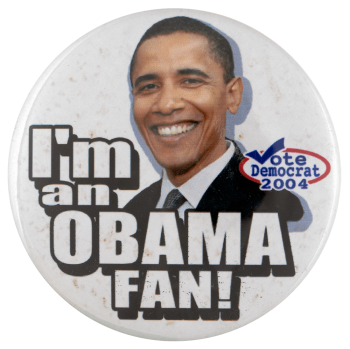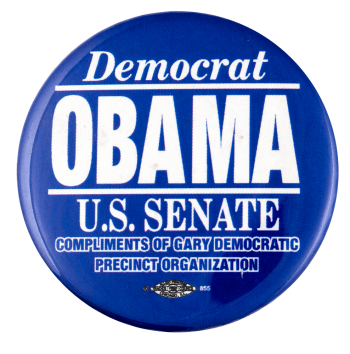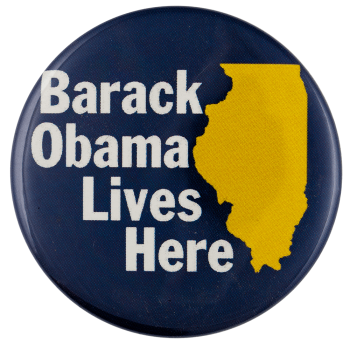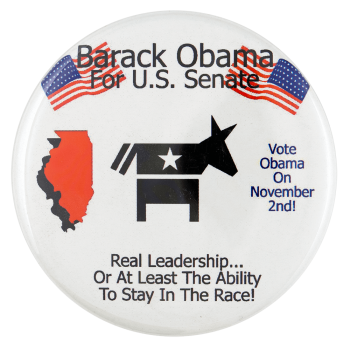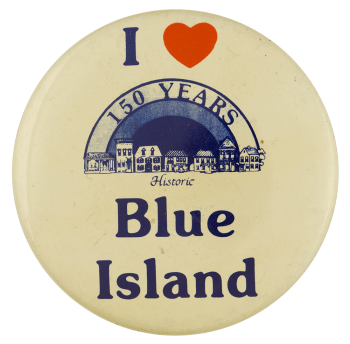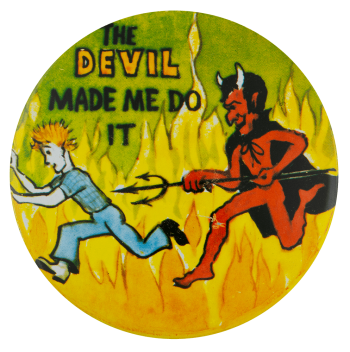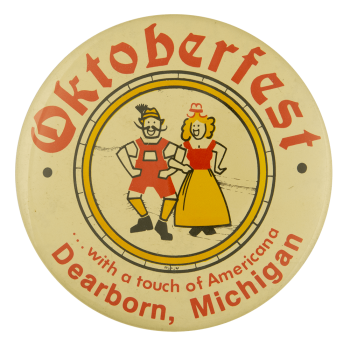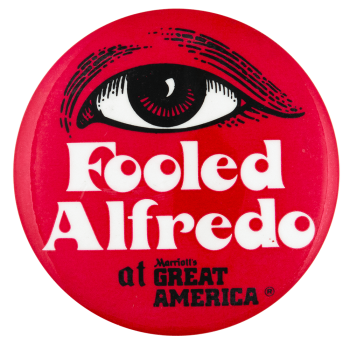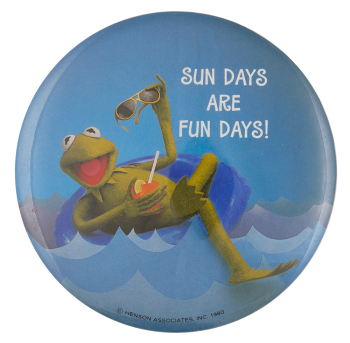I'm an Obama fan
| Category | |
|---|---|
| Additional Images | |
| Sub Categories | |
| Text on Button | I'm an OBAMA FAN! Vote Democrat 2004 |
| Image Description | Barack Obama in center. White block text on the left. Blue text in a red oval on the right. White background. |
| Back Style | |
| The Shape | |
| The Size | |
| Year / Decade Made | |
| Additional Information | In 2004 Barack Obama announced his bid for the Illinois Senate, following the announcement from incumbent Peter Fitzgerald that he would not run for a second term. Obama quickly rose to the top following endorsements from most major Illinois newspapers and several large unions. Initially the Republican frontrunner was Jack Ryan, but he dropped out following divorce court records were released in which his wife alleged he pressured her into public sex acts. His replacement, John Keyes suffered from a conservative voting record and his image as an outsider, having few ties to Illinois. Obama received 70% of the vote, with the race being one of the first to be called on Election Day. The race and subsequent victory brought Obama to the forefront of the Democratic Party and grew his popularity, which later led to his election as President in 2008. |
| Sources |
Neal, Steve (December 31, 2003). "Obama's endorsements stacking up; Before he died, former Sen. Paul Simon had decided to endorse Obama". Chicago Sun-Times. p. 33. Retrieved from http://nl.newsbank.com/nl-search/we/Archives?p_product=CSTB&p_theme=cstb... Kinzer, Stephen; Jo Napolitano (June 23, 2004). "Illinois Senate Campaign Thrown Into Prurient Turmoil". The New York Times. Retrieved from https://query.nytimes.com/gst/fullpage.html?res=9406E3D71039F930A15755C0.... "Election Results". www.elections.il.gov. Illinois State Board of Elections. Retrieved from https://www.elections.il.gov/ElectionOperations/ElectionVoteTotals.aspx. |
| Catalog ID | PO1009 |

